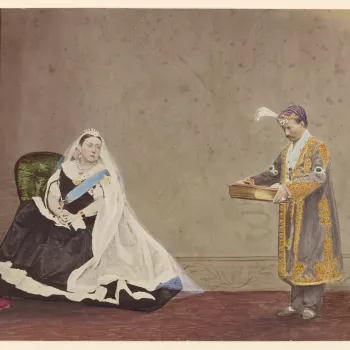
From Company to Crown
In 1856 the East India Company annexed Awadh and exiled its king, Wajid Ali Shah, to Calcutta (Kolkata). The following year, a mutiny among the Company’s soldiers triggered a series of rebellions across northern and central India. This was known at the time as the ‘Indian Mutiny’ or ‘the Uprising’.
By the end of the rebellion, the Mughal emperorBahadur Shah Zafar was exiled to Rangoon in Burma (Myanmar) and the East India Company’s territorieswere all transferred to the British Crown. Queen Victoria now ruled two-thirds of the subcontinent while the remainder were ruled by more than 560 so-called ‘Native Princes’ whose states became British protectorates.










